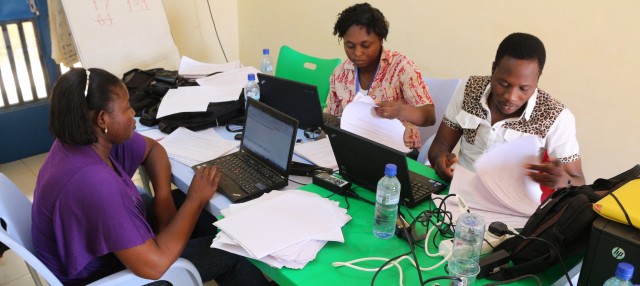
Mobile data, measurement & evidence… what’s new?
11th November 2014
As mobile data collection in remote regions and developing countries becomes more viable for development organisations, the robustness of the methodologies used must be considered in relation to the goal of evidence-based development.
Expanded possibilities
According to the UN International Telecommunication Union, “by the end of 2014, 55% of all mobile-broadband subscriptions are expected to be in the developing world, compared with only 20% in 2008”. Furthermore, Africa is one of the quickest growing mobile-broadband regions, with mobile phone ownership becoming increasingly widespread. What does this mean for data collection and the creation of meaningful evidence in low-income developing countries?
In the health sector, gaps in data collection and application are being filled through a mobile-based approach. For instance, low levels of malaria drugs can be reported by SMS to avoid shortages and verification systems can be implemented so the public can confirm via SMS that their drugs are not counterfeit. Such pilot projects are running in Tanzania and Nigeria, respectively. Likewise, banking, communication and survey opportunities are all becoming more accessible in remote or developing regions as mobile phone usage spreads.
Context is key
Before these approaches are replicated across sectors, regions and states, there must be assurances that the underlying methodologies used are robust and comparable. While mobile-collected data is important, basic information should be complemented by richer contextual details where appropriate.
The World Bank recently released the 2014 Policy Research Report entitled, ‘A Measured Approach to Ending Poverty and Boosting Shared Prosperity: Concepts, Data, and the Twin Goals’. The report emphasizes data collection systems that can collect frequent and sizable data on poverty and inequality, affirming the necessity of better and more quickly accessible household survey data – data that is also comparable across countries and over time – to be able to positively and sustainably impact policy. Mobile-derived data might seem relevant to this end, with merits including improved access to real-time information and increased individual participation. However, there are certain problems with crowd-sourced information in terms of accuracy, effectiveness of questioning, availability of information on respondents and households, and appropriate context to the studies. Ultimately, mobile data needs to be embedded in cohesive wider frameworks.
EfD’s approaches
The work that Evidence for Development does in mapping and analysing livelihoods and building capacity for collecting and using such information in many African countries is at the crux of addressing this challenge. The use of the individual household method (IHM) and the household economy approach (HEA) provide big steps forward for making policy based on the best evidence practical in many situations, carried out efficiently yet effectively and in ways that can be replicated with the same high standards. Mobile-collected data can be important for getting up-to-date information, but it cannot necessarily become critical as evidence without the provision of a wider context and the promise of accurate reporting.
For instance, the HEA allows for assessment of rural populations’ vulnerabilities to economic shocks that can forecast where problems will develop if and when exogenous changes, climate shifts and other circumstances occur. Livelihoods information from key informants can provide context and help to quickly identify the most important sources of food and cash income, consumption patterns, and coping strategies during crises. In a fragile state such as South Sudan, where people are vulnerable to a wide range of shocks, livelihood zoning can inform both responses to short-term needs and long-term solutions – and such context-rich information can add meaning to complement more basic crowd-sourced data.
The IHM provides further evidence by studying distinct households’ incomes. Since information is gleaned through semi-structured interviews, there is a built-in flexibility to highlight complex variations across households. Likewise, the collected data is crosschecked using software in the field to eliminate potential errors, harnessing the increasing availability of laptops that facilitates same-day, on-the-spot analysis. Income details and information on the progress of local development programmes can then be efficiently provided to decision makers at various levels. Furthermore, with the continuing use of these methods across many parts of Africa and in longitudinal studies (some also involving other methods), livelihood zone and household data comparison across borders and over time is more easily achieved.
Measurement paradigm shift
In effect, data collection is important but the methodology behind the measurement is critical in translating information into policy-related evidence. To address the dual challenges of insufficient data and incomparable data, it will be important to find a good balance of baseline information and periodic monitoring so that shocks, climate change impacts, food security and health problems can each be addressed. Crowd-sourced data is likely to play a role but with increasingly complex and interrelated crises, more thorough and comparable evidence will be necessary.
Making sure that measurement follows methodological and ethical standards and that data is accompanied by sufficient context can lead to strong evidence. Designing policies to help end poverty requires such a paradigm shift and an emphasis on the context-rich, sub-national level measurement, data and analysis that (alongside other elements) can provide greater opportunities for such policy to take shape.
Categories: Data, HEA, IHM, Monitoring and evaluation, Policy and programme design, Technology

Comments
No comments yet.
The comments are closed.